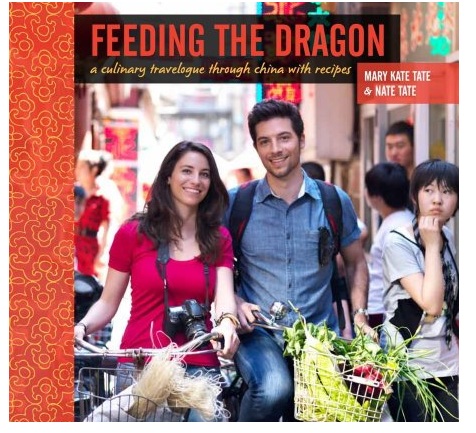“THE MOST IMPORTANT thing we figured out was how to collect recipes,” writes Nate Tate in the introduction to Feeding the Dragon. “Asking a chef to share his secrets with us or making friends with someone only to invite ourselves back to his or her home to cook a meal together was awkward at first, but we were rarely turned away; Chinese people are incredibly hospitable, especially when they realize you are a foreigner who has made the effort to speak their language.”

There’s a sense of graciousness and stoke in Tate’s words that for me characterizes this book, and it would seem, their entire journey through China. Nothing brings people together – regardless of how different they are culturally – like sharing a meal, and brother / sister team Nate and Mary Kate Tate’s travelogues, photos, and of course recipes (there are 100) constantly remind you of that.
Arranged by the authors’ travel itinerary through nine Chinese provinces, Feeding the Dragon’s recipes are arranged according to region of origin and presented alongside alternating first-person narratives and travel photos. The book also has:
- ingredient glossary—complete with Chinese names, descriptions, and equivalent substitutions—to help cooks navigate Asian grocery stores
- online ingredient retailers for those without easy access to an Asian market
- essential tools and basic cooking techniques including how to steam, how to season a wok, how to use chopsticks, how to fold dumplings, how to cook rice
- sample menus and recommended flavor combinations for specific social gatherings
- a simple language guide
Chinese cooking seems daunting for some reason, although they line out recipes in a way that seems very accessible. I think I’m going to try making the Tibetan Curry Potatoes first, and then progress to Comfort Beer Noodle Soup. Dumplings could happen somewhere downstream.
My only complaint about this book is its size. Nearly textbook height and width (10″ x 9.5″), this book isn’t easy to travel with. It’s meant to live in the kitchen.
All in all I definitely recommend this book for anyone who cooks, or is interested in Chinese food and culture. It’s a big, beautiful work – the layout, design, and way the stories and and recipes interweave – all of it is inspiring. Check it here on Amazon.